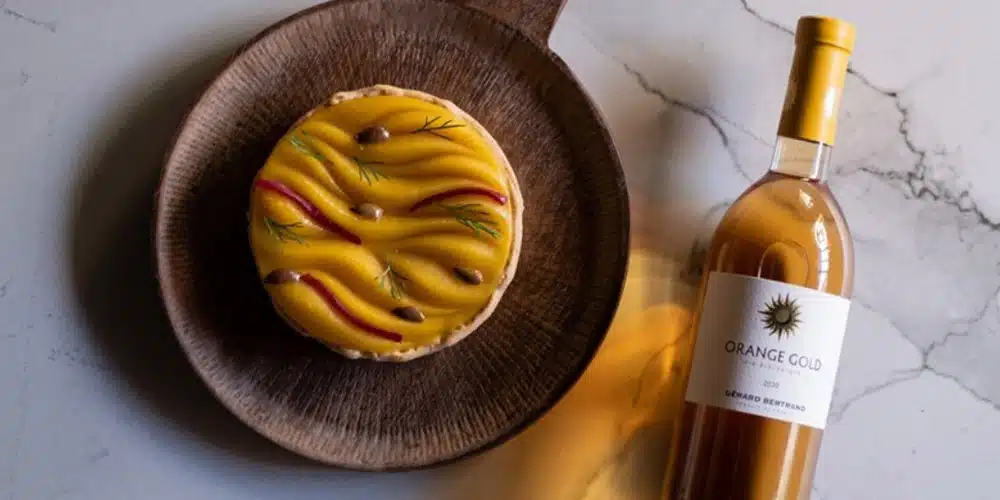Orange Wine: The Latest Wine Trend

You may have heard of orange wine, a unique type of wine that’s gaining popularity. But what exactly is it, and what makes it different from other types of wine? In this guide, we’ll explore the history and production of orange wine, and find out what makes it special.
What is orange wine?
If you haven’t heard of orange wine, you might suppose it is a totally new type of wine. Perhaps it’s made from a mix of red and white wines (or even oranges!)? It certainly seems to have burst onto the wine scene very recently. However it is actually made from just white wine grapes that have been fermented with their skins and seeds. It’s an ancient process similar to the production of red wine. The grape seeds give the wine its orange colour and the unusual fermentation technique results in a unique flavour profile. Orange wine is also known as amber or skin-fermented wine, and you may already be familiar with ramato, an Italian wine produced by fermenting pinot grigio on the skins.
History and production
The winemaking process used to produce orange wine has been around for thousands of years. Archaeological evidence from the eastern European country of Georgia shows that the people there used this technique as much as 8,000 years ago. They fermented crushed grapes along with their skins, seeds and stalks in large ceramic vessels called qvevri. The winemakers either buried the qvevri in the ground or set them into cellar floors. Qvevri are still in use to this day, with traditional Georgian wines made in the same way now as they were centuries ago.
The fermentation process rarely involves any additives, often not even yeast. The grapes ferment naturally, the skins and seeds in contact with the juice, in a closed container for anything from a few days to over a year. This results in the distinctive orange or amber colour of the wine as well as some unique flavours and textures.
Taste and characteristics
Orange wine often has an intense flavour, with drying tannins rather like a red wine and a nutty, fruity sourness. Common tasting notes include dried fruits, nuts and hay – and even honey, bearing comparison with mead. Aromas veer towards tropical and stone fruits, nuts, juniper and bruised apples. The texture also feels slightly grainy or gritty, and the wine may even be cloudy.
Why has orange wine become trendy recently?
The production of orange wine is not restricted to Georgia. Italian and Slovenian wineries in particular have been using this technique for hundreds of years. But in the late 20th century word got out about this unusual style of winemaking. Now wineries in several countries, particularly the New World, are experimenting with producing orange wines.
As a truly distinctive type of wine it offers a different taste and texture experience to red, white or rosé. It’s also often produced with natural yeasts, with no additives, and using organic methods. It therefore appeals greatly to consumers interested in eco-friendly products. And orange wine is good with food – particularly intensely flavourful dishes such as curries and east Asian food, or those with rich, creamy sauces, for example pasta dishes. This versatility with food will likely mean orange wine will continue to grow in popularity.
Gérard Bertrand’s Orange Gold Blanc
The Wine Box has recently added a superb French orange wine to our range. This organically produced wine brings together a number of white grape varieties found in the south of France. Bertrand’s deft touch results in a beautifully clear, amber coloured wine with complex aromas, lovely balance and a delicate texture. Try it with lightly spiced food or hard cheeses.
